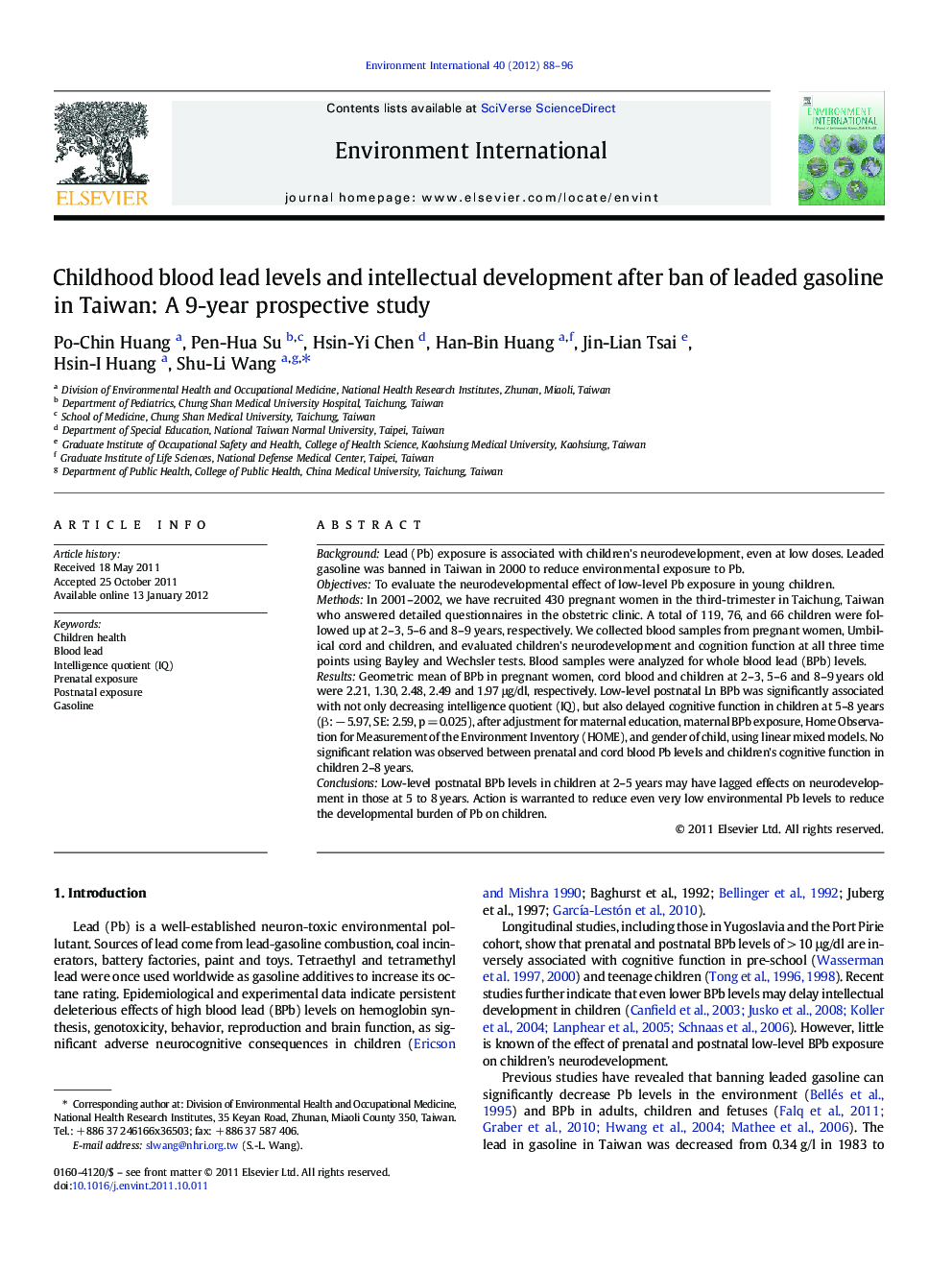| کد مقاله | کد نشریه | سال انتشار | مقاله انگلیسی | نسخه تمام متن |
|---|---|---|---|---|
| 4423104 | 1619087 | 2012 | 9 صفحه PDF | دانلود رایگان |

BackgroundLead (Pb) exposure is associated with children's neurodevelopment, even at low doses. Leaded gasoline was banned in Taiwan in 2000 to reduce environmental exposure to Pb.ObjectivesTo evaluate the neurodevelopmental effect of low-level Pb exposure in young children.MethodsIn 2001–2002, we have recruited 430 pregnant women in the third-trimester in Taichung, Taiwan who answered detailed questionnaires in the obstetric clinic. A total of 119, 76, and 66 children were followed up at 2–3, 5–6 and 8–9 years, respectively. We collected blood samples from pregnant women, Umbilical cord and children, and evaluated children's neurodevelopment and cognition function at all three time points using Bayley and Wechsler tests. Blood samples were analyzed for whole blood lead (BPb) levels.ResultsGeometric mean of BPb in pregnant women, cord blood and children at 2–3, 5–6 and 8–9 years old were 2.21, 1.30, 2.48, 2.49 and 1.97 μg/dl, respectively. Low-level postnatal Ln BPb was significantly associated with not only decreasing intelligence quotient (IQ), but also delayed cognitive function in children at 5–8 years (β: − 5.97, SE: 2.59, p = 0.025), after adjustment for maternal education, maternal BPb exposure, Home Observation for Measurement of the Environment Inventory (HOME), and gender of child, using linear mixed models. No significant relation was observed between prenatal and cord blood Pb levels and children's cognitive function in children 2–8 years.ConclusionsLow-level postnatal BPb levels in children at 2–5 years may have lagged effects on neurodevelopment in those at 5 to 8 years. Action is warranted to reduce even very low environmental Pb levels to reduce the developmental burden of Pb on children.
► It is one of the few studies to examine effects of pre- and postnatal low-level lead exposure in a single paper.
► The data provide important evidence in support further reduction of postnatal lead exposure from 10 to 2 μg/dl.
► Postnatal blood lead exposure between 2 and 5 years may have lagged effects on children's neurodevelopment at 5 to 8 years.
Journal: Environment International - Volume 40, April 2012, Pages 88–96